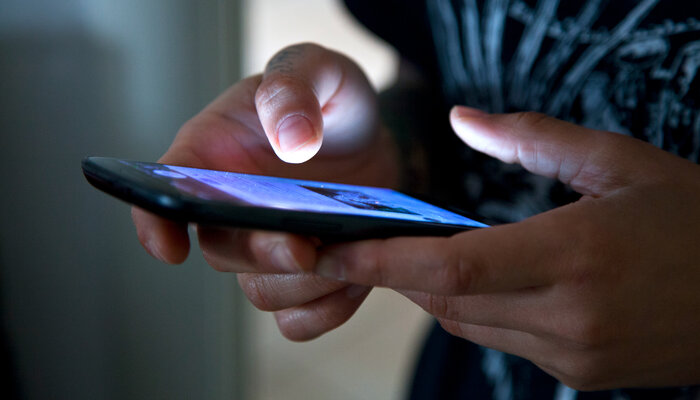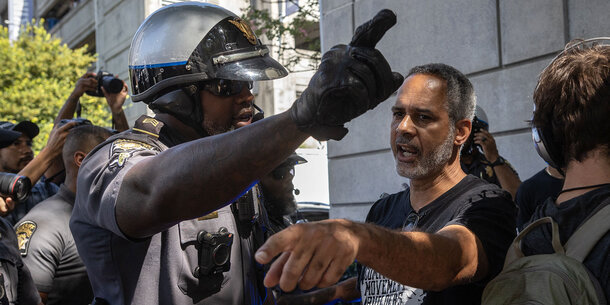The following is adapted from a Brennan Center resource on social media monitoring by the U.S. government.
Social media has become a significant source of information for U.S. law enforcement and intelligence agencies for purposes ranging from conducting investigations to screening travelers. This raises a host of civil rights and civil liberties concerns. Someone’s social media presence can reveal an astounding amount of personal information: beliefs, professional and personal networks, health conditions, sexuality, and more.
With that in mind, this growing — and largely unregulated — use of social media by the government is rife with risks for freedom of speech, assembly, and religion, particularly for Black, Latino, and Muslim communities, who are already targeted the most by law enforcement and intelligence efforts. Many of the agencies currently conducting social media surveillance today have a history of using this and other types of monitoring to target minorities and social movements.
Which federal agencies are conducting surveillance on social media platforms?
The three agencies that use social media the most for monitoring, targeting and information collection are the Department of Homeland Security, the Federal Bureau of Investigation, and the State Department.
However, many other federal agencies monitor social media, including the Drug Enforcement Administration, the U.S. Postal Service, the Internal Revenue Service, the Social Security Administration, the U.S. Marshals Service, and the Bureau of Alcohol, Tobacco, Firearms and Explosives.
Why do federal agencies monitor social media?
Federal agencies use social media for four main purposes.
Investigations: Law enforcement agencies monitor social media to assist with criminal and civil investigations, some of which may not require a prior showing of criminal activity. Without any factual basis, FBI agents can open a type of inquiry called an “assessment” if they have an “authorized purpose” like preventing crime or terrorism, during which they can carry out searches of publicly available online information. Subsequent investigative stages, which require some factual basis, open the door for more invasive surveillance tactics, such as the monitoring and recording of chats, direct messages, and other private online communications in real time. ICE agents can look at public social media content as well as operate undercover online to monitor private online communications, but the circumstances under which the latter is permitted are not publicly known.
Threat detection: FBI agents can monitor public social media postings even without opening an assessment or other investigation. Various components within DHS, including its Office of Intelligence & Analysis, also monitor social media, aiming to identify potential threats of violence or terrorism.
Situational awareness: The federal government also uses social media to provide an “ear to the ground” when coordinating a response to breaking events. A range of DHS offices — including the Office of Operations Coordination and Planning, Customs and Border Protection and the Federal Emergency Management Agency — keep tabs on a broad list of websites and keywords being discussed on social media platforms. Such monitoring can help keep people informed about developments during a crisis, identify those in need of help, and determine “threats or dangers” to DHS personnel and facilities. However, privacy impact assessments of these programs suggest there are few limits on the content that can be reviewed.
Immigration and travel screening: The social media accounts of travelers and immigrants coming into the United States are used to vet them upon entry, as well as to monitor them while they live here. Those applying for a range of immigration benefits also undergo social media checks to verify their information and determine if they pose a security risk.
How can this kind of surveillance be harmful?
Among other issues, government monitoring and use of social media can result in wrongful allegations of criminal activity, chilling of people’s willingness to talk and connect openly online, invasions of privacy, and sometimes high-stakes misinterpretations of social media activity.
While all Americans may be harmed by unrestricted social media monitoring, protestors and historically marginalized communities typically bear the brunt of suspicionless surveillance. Echoing wrongdoings from the civil rights era, there are many examples of the FBI and DHS using social media to surveil those speaking out against the government.
Both agencies have monitored Black Lives Matter activists. DHS has focused social media surveillance on immigration activists. Middle Eastern and South Asian communities have often been particular targets of the government’s discriminatory travel and immigration screening practices, including social media screening. The State Department’s collection of social media handles on visa forms came out of President Trump’s Muslim ban, and DHS officials barred a Palestinian student coming to study at Harvard from entering the country based on his friends’ social media posts.
Is social media surveillance a good way to gather information on potential threats?
Not particularly. Take it from the former acting chief of DHS’s Office of Intelligence & Analysis, who said, “Actual intent to carry out violence can be difficult to discern from the angry, hyperbolic — and constitutionally protected — speech and information commonly found on social media.”
Social media conversations are difficult to interpret because they are often highly contextual and riddled with slang, jokes, memes, sarcasm, and references to popular culture, not to mention heated rhetoric. Broad threat detection on social media, disconnected from any specific suspicion of wrongdoing, generates reams of useless information, which can unproductively crowd out information on real public safety concerns.
What internal rules bind these agencies’ use of social media?
Some agencies, like the FBI, DHS, State Department and IRS, have released information on the rules governing their use of social media in certain contexts. Other agencies — such as the ATF, DEA, Postal Service, and Social Security Administration — have not made any information public. What is known about their use of social media has emerged from media coverage, some of which has attracted scrutiny.
Do any laws limit the U.S. government’s activity in this space?
Yes. Surveillance is clearly unconstitutional when a person is specifically targeted for the exercise of rights protected by the First Amendment or on the basis of a characteristic protected by the Fourteenth Amendment, such as race or ethnicity. Social media monitoring may also violate the First Amendment when it burdens constitutionally protected activity without contributing to a legitimate government objective.
Additionally, the Fourth Amendment protects people from “unreasonable searches and seizures” by the government, including searches of data in which people have a “reasonable expectation of privacy.” Social media posts are public, but courts are increasingly recognizing that when the government can collect far more information at a much lower cost than traditional surveillance, the Fourth Amendment may protect that data.
The most notable statutory limit is the Privacy Act, which limits the collection, storage, and sharing of personally identifiable information about U.S. citizens and permanent residents, including social media data. While it bars maintaining records that describe the exercise of a person’s First Amendment rights, the statute contains an exception for such records “within the scope of an authorized law enforcement activity.”
Do the social media platforms have a say in all this?
Social media platforms can and do set rules that limit the government’s ability to conduct surveillance on their users. Facebook’s terms of service require users to identify themselves by their “real names,” with no exception for law enforcement. After the ACLU exposed that social media monitoring companies were pitching their services to law enforcement agencies as a way to monitor protestors against racial injustice, Twitter and Facebook/Instagram changed or clarified their rules to prohibit the use of their data for surveillance.
That’s not to say the government always plays by the rules: for instance, the FBI and other federal law enforcement agencies permit their agents to use false identities, and the enforcement of most platform rules tends to be murky.
Do federal agencies share the info they collect from social media?
Federal agencies may share information they collect from social media across all levels of government and the private sector and will sometimes even disclose data to foreign governments (as with identifiers on travel and immigration forms). Mostly, information is shared domestically with state and local law enforcement.
This unfettered data sharing magnifies the risks of abusive practices: once social media data is disseminated, the originating agency has little control over how that information is used, how long it is kept, whether it could be misinterpreted, or how it might spur overreach.
Are private contractors involved in social media surveillance?
Yes. The FBI and DHS both hire private companies to conduct social media monitoring on their behalf. One firm was awarded a contract with the FBI in 2020 to scour social media and proactively identify “national security and public safety-related events” that had yet to be reported to law enforcement.
The use of private firms raises concerns about transparency and accountability. Contractors are not subject to freedom of information laws, nor to many of the same legal or institutional constraints as public agencies, obscuring how monitoring is being carried out.
In addition, some private tools use artificial intelligence to make risk assessments about the potential for violence from social media content. But because violent criminal and terrorist acts are statistically rare, predicting these acts reliably is beyond the capacity of humans and AI alike, as more than 50 technologists wrote in opposing an ICE proposal aimed at predicting whether individuals would commit terrorism or other crimes.








